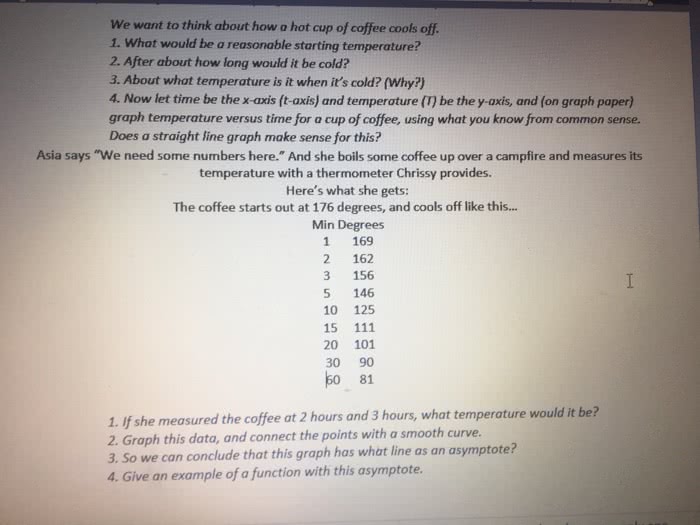MATH 120 Lecture 36: Sinusoidal Function Example (with arcsine)

Dr. Matthew M. Conroy - University of Washington
1
Sinusoidal Function Example (with arcsine)
Suppose the temperature of a certain animal is a sinusoidal function of time.
Five hours after you start measuring it, the temperature is at its maximum: 90 degrees Fahren-
heit. The temperature than dropped, reaching its minimum of 83 degrees 3 hours later.
In the first 19 hours during which you are measuring the temperature, how much of the time
is the temperature above 84 degrees?
To solve this, we begin by determining the sinusoidal function that gives the temperature in
terms of time.
Let t= 0 be the time when you start measuring. Then, we sketch a graph of the function,
showing as much information as we know:
We then extend the graph so that we see a full period:
Now, we work out the parameters A, B, C and D:
A=1
2(90 −83) = 3.5D=1
2(90 + 83) = 86.5B= 2(8 −5) = 6 C= 8 + B
4= 9.5
So, the function is
f(t) = 3.5 sin 2π
6(t−9.5)+ 86.5.
Now, since we are interested in how much time the temperature is above 84 degrees, we begin
by finding all solutions to the equation
f(t) = 84
find more resources at oneclass.com
find more resources at oneclass.com
Document Summary
Suppose the temperature of a certain animal is a sinusoidal function of time. Five hours after you start measuring it, the temperature is at its maximum: 90 degrees fahren- heit. The temperature than dropped, reaching its minimum of 83 degrees 3 hours later. To solve this, we begin by determining the sinusoidal function that gives the temperature in terms of time. Let t = 0 be the time when you start measuring. Then, we sketch a graph of the function, showing as much information as we know: We then extend the graph so that we see a full period: Now, we work out the parameters a, b, c and d: So, the function is f (t) = 3. 5 sin(cid:18) 2 . Now, since we are interested in how much time the temperature is above 84 degrees, we begin by nding all solutions to the equation f (t) = 84.


